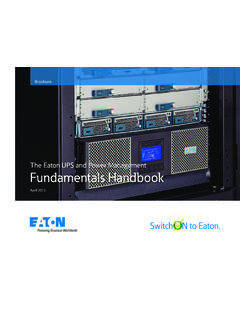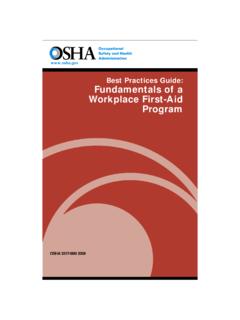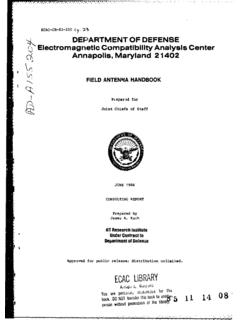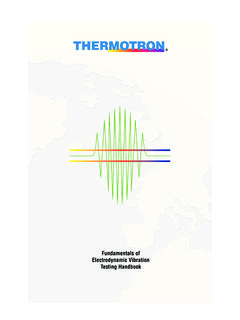Transcription of Engine fundamentals - Suzuki Auto
1 Engine fundamentals Engine Mechanical I Course code: EN02 Student training manual Suzuki Online Training Foreword The internal combustion Engine converts chemical energy to mechanical energy. In this training course, you will study the basic fundamentals of Engine construction. The basics of the Engine top end construction and bottom end construction will be described in lesson 1. Basic Engine checks and maintenance are described in lesson 2. Suzuki Technician curriculum This training manual is part of the Non Suzuki Technician to Suzuki Technician curriculum. The curriculum consists of the following modules: Suzuki Introduction Electrical / Electronics 3. GE03 Diagnostics Engine Mechanical part I Engine Mechanical part II Engine Mechanical part III Engine Auxiliary systems Driveshaft/Axle Driveshaft/Axle - transfer case Brake control systems Manual transmission / transaxle Control system / body electrical Communication / bus systems You are currently studying DS02 Driveshaft/Axle Transfer case.
2 This module consists of the following courses: Engine fundamentals K10B, K14B/K12B Engine general information This document is intended exclusively for training purposes only. All vehicle repairs, service, maintenance, adjustments must be carried out according to the procedures stipulated in current service manuals and technical bulletins. Smart manuals Some sections of this training manual contain videos with detailed information on the topics you are studying. If you are studying this training manual on a PC, look out for the green play video symbol on any part of this manual, click on the green button to watch a video providing you with detailed information on that topic. Note: Internet connection required to view online videos. EN02 Engine Mechanical I - Engine fundamentals 2 table of contents Topic Page Lesson 1 Engine fundamentals 4 Basic Engine operation 5 Intake 5 Compression 7 Combustion 7 Exhaust 8 Engine unit 8 Piston 9 Piston ring 11 Cylinder block 12 Connecting rod 14 Crankshaft 14 Crankshaft and connecting rod bearings 16 Flywheel, drive plate and torque converter 18 Valve mechanism 18 Cylinder head 26 Cylinder head gasket 28 Lesson2 Basic Engine maintenance 29 Cylinder head checks and corrections 30 Important points for cylinder head removal And installation ` 31 Cylinder and cylinder block checks and corrections 33 Cylinder block check 33 Piston.
3 Piston and piston ring check 34 Piston pin check 35 Piston ring check 36 Topic Page Important points for piston removal and piston Installation 36 Connecting rod and bearings checks 40 Crankshaft and crankshaft bearing checks 41 Flywheel and ring gear checks & corrections 43 Valve mechanism checks and corrections 43 Camshaft check 46 Camshaft housing check 46 Important points for valve mechanism disassembly and assembly 49 Timing chain (timing belt) and tensioner check 49 Important points for timing chain (belt) assembly 50 EN02 Engine Mechanical I - Engine fundamentals 3 EN02 Engine Mechanical I - Engine fundamentals Lesson 1: Engine fundamentals Objectives At the end of this lesson, you will be able to: Describe the intake, compression, combustion and exhaust strokes of the internal combustion Engine . Explain the construction/design of each of the Engine components/parts discussed in this lesson.
4 Describe the functions of each of the Engine components/parts discussed in this lesson. 4 EN02 Engine Mechanical I - Engine fundamentals 5 Basic Engine operation An Engine has 4 strokes: air fuel mixture intake compression combustion exhaust. The Engine extracts its power from the force that pushes down the piston in the combustion stroke. A good air fuel mixture, good compression and good spark are necessary for the best power output. "A good air fuel mixture" means that the ratio to which fuel and oxygen are mixed is appropriate for fully burning the mixture. "A good compression" means that the air fuel mixture sucked into the cylinder is compressed until it reaches an appropriate pressure and appropriate temperature. When the air fuel mixture is compressed, its density is increased, enabling it to be burned rapidly. This means that even though the mixture itself is the same, it generates a greater force than when it is not compressed.
5 "A good spark" means that a spark is generated that is sufficient for burning the compressed air fuel mixture. In other words, for an Engine to operate normally, it is important that "a good air fuel mixture" is supplied in the intake stroke so that thermal energy is efficiently extracted from the gasoline. To fully burn this air fuel mixture, "a good compression" must be performed for the mixture in the compression stroke, and the mixture must then be ignited with "a good spark" in the combustion stroke. The thermal energy that is generated by the burning must be efficiently converted into kinetic energy, and the exhaust gas must be fully expelled in the exhaust stroke (so that "a good air fuel mixture" can be sucked into the cylinder in the next intake stroke). Intake As the crankshaft rotates, the connecting rod that is connected to the crankshaft moves the piston down from near to top dead center to near to bottom dead center.
6 This lowers the pressure in the cylinder. At this time, the intake valve is open and the exhaust valve is closed. The drop in pressure inside the cylinder sucks the air fuel mixture into the cylinder from the intake pipe. (i ) Air-fuel ratio EN02 Engine Mechanical I - Engine fundamentals 6 Burning is an oxidation reaction that is accompanied by heat and light generation. Burning requires a substance to burn, a supply of oxygen, and that the substance s temperature is equal to or greater than its ignition point. In other words, the mixture between the gasoline and air (oxygen) must be thoroughly mixed and it must have an appropriate concentration (air-fuel) The "air-fuel ratio" is the mix ratio between fuel and air. The standard air-fuel ratio for gasoline combustion is called the "stoichiometric air-fuel ratio". The ideal amount of air required for burning 1 g of petrol is calculated as g of air. Start up and low temperatures Petrol that is injected at low temperatures has difficulty vaporizing.
7 Sometimes it adheres to the intake manifold and only some of the gasoline is sucked into the cylinder. Also, if the gasoline does not vaporize and is sucked into cylinder in particle form, it is difficult to burn and may be expelled. For this reason, to make sure that the vaporized mixture reaches the stoichiometric air-fuel ratio, extra gasoline must be supplied. Acceleration During acceleration, a large amount of air is sucked in. The air fuel mixture becomes leaner because of the air that was suddenly increased. To deal with this, more fuel than normal is injected during acceleration. On the other hand, during deceleration, Engine output is not required. The fuel supply is stopped in some operating ranges to make the exhaust gas cleaner. Looking at the relationship between the air-fuel ratio, the Engine output and the fuel economy, we can see that the air-fuel ratio greatly affects the output and fuel economy. The ideal solution is to set different air-fuel ratios for different conditions.
8 An economical air-fuel ratio is best for economical operation under partial loads, which is the normal usage range of a vehicle. An output air-fuel ratio is best for generating more output near to the full load range, where greater output is required. Examples of air-fuel ratios for different conditions Operating condition Air-Fuel ratio Cold start (in cold temperatures) 1:1 5:1 Cold start (in normal temperatures) 5:1 10:1 Low speed operation 14:1 15:1 Maximum output operation 12:1 13:1 Economical operation 16:1 17:1 EN02 Engine Mechanical I - Engine fundamentals 7 Compression While both the intake and exhaust valves are closed, the piston moves up from near to bottom dead center to near to top dead center. This raises the pressure inside the cylinder, and the air fuel mixture inside the cylinder reaches a high temperature and high pressure. The movement of the air fuel mixture during compression mixes the mixture well, and the increased mixture temperature makes it easier for the gasoline to vaporize.
9 As a result, the mixture is easier to burn. Further, the mixture density increases due to the compression, which enables rapid combustion. The mixture compression amount is expressed with the compression ratio. This value indicates by how much the air fuel mixture that was sucked into the cylinder has been compressed by the time of ignition. If the compression ratio is made too high in an attempt to obtain a strong explosive force, Engine knocking will occur. An appropriate compression ratio for a 4-cycle petrol Engine is 8 to 10. Combustion When the piston is near to (compression) top dead center and the air fuel mixture is compressed, the spark plug generates an electrical spark to burn the mixture. The electrical spark generated by the spark plug forms a flame kernel in the air fuel mixture near to the spark plug s electrode. This flame kernel grows and the flame surface acts as a new ignition source to ignite the air fuel mixture that is next to it.
10 The burning continues and spreads in this way and generates heat. The pressure inside the cylinder rises in accordance with the amount of heat and pushes the piston to bottom dead center. Figure 1: Compression ratio= Intake air/compressed air When Engine knocking occurs, the pressure rise caused by burning vibrates the gas inside the combustion chamber and makes a scratching sound EN02 Engine Mechanical I - Engine fundamentals 8 In other words, an easy-to-burn air fuel mixture and sufficient ignition energy to ignite the mixture are required for ignition. Further, the combustion timing must be optimized to apply the appropriate combustion pressure to the piston. It follows that the ignition timing must be earlier when the Engine rotation speed is high. Exhaust While the intake valve is closed and the exhaust valve is open, the piston moves up from near to bottom dead center to near to top dead center. This expels the exhaust gas from the cylinder into the atmosphere via the exhaust system.










